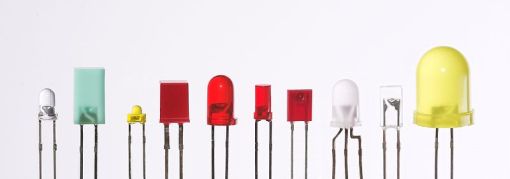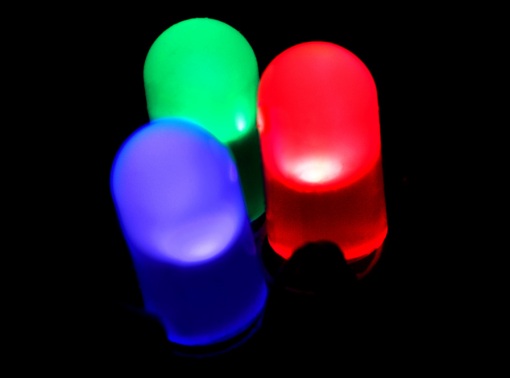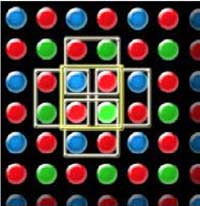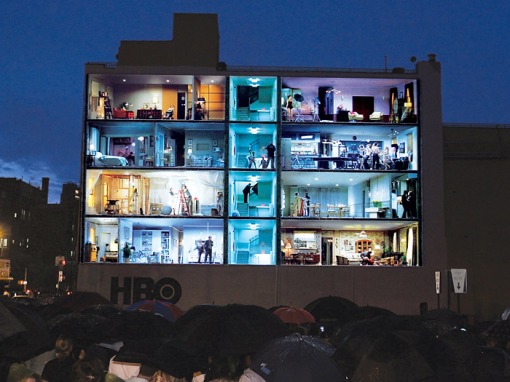How LED displays work? What’s the difference between 1R1G1B real pixel and 2R1G1B virtual pixel or SMD 3in1? Which one should I choose? Which one is the best for my business? These are the most popular questions we get, so here I’m going to answer these questions giving at the same time some live examples of the projects.
First of all we need to understand what is LED and how it works. (If you know that – you can skip to the next paragraph).
Light Emitting Diodes (LEDs) are exactly what they say. They emit light rather than reflect it and are therefore many times brighter than other technologies. Diodes are one-way electronic semiconductors; they respond rapidly to being switched on and off (as occurs in moving images) and they do not lose their colour if a drop in electrical current occurs. No other type of image generator like LCD, CRT, Plasma or Projector Screen was (and still isn’t) suitable to be used under direct sunshine. Only LED offers the brightness, colour saturation, contrast and wide viewing angle.
A LED display is a video display which uses light-emitting diodes. A LED panel is a small display, or a component of a larger display. They are typically used outdoors in store signs and billboards, and in recent years have also become commonly used in destination signs on public transport vehicles. LED panels are sometimes used as form of lighting, for the purpose of general illumination, task lighting, or even stage lighting rather than display.
Types of LED Displays.
‘There are two types of LED panels: conventional (using discrete LEDs) and surface-mounted device (SMD) panels. Most outdoor screens and some indoor screens are built around discrete LEDs, also known as individually mounted LEDs. A cluster of red, green, and blue diodes is driven together to form a full-color pixel, usually square in shape. These pixels are spaced evenly apart and are measured from center to center for absolute pixel resolution.
1R1G1B- real pixel SMD 3in1 2R1G1B- virtual pixel (bis)
Most indoor screens on the market are built using SMD technology—a trend that is now extending to the outdoor market. A SMD pixel consists of red, green, and blue diodes mounted in a single package (SMD 3in1), which is then mounted on the driver PC board. The individual diodes are smaller than a pinhead and are set very close together. The difference is that the maximum viewing distance is reduced by 25% from the discrete diode screen with the same resolution.
Indoor use generally requires a screen that is based on SMD technology and has a minimum brightness of 600 candelas per square meter. This will usually be more than sufficient for corporate and retail applications, but under high ambient-brightness conditions, higher brightness may be required for visibility. Fashion and auto shows are two examples of high-brightness stage lighting that may require higher LED brightness. Conversely, when a screen may appear in a shot on a television studio set, the requirement will often be for lower brightness levels with lower color temperatures; common displays have a white point of 6500–9000 K, which is much bluer than the common lighting on a television production set.
For outdoor use, at least 2,000 cd/m² is required for most situations, whereas higher-brightness types of up to 5,000 cd/m² cope even better with direct sunlight on the screen. (The brightness of LED panels can be reduced from the designed maximum, if required.)
Outdoor LED advertising display.
Suitable locations for large display panels are identified by factors such as line of sight, local authority planning requirements (if the installation is to become semi-permanent), vehicular access (trucks carrying the screen, truck-mounted screens, or cranes), cable runs for power and video (accounting for both distance and health and safety requirements), power, suitability of the ground for the location of the screen (if there are no pipes, shallow drains, caves, or tunnels that may not be able to support heavy loads), and overhead obstructions.’
(by Wikipedia)
What is pixel pitch, P10, P20, Real Pixel or Virtual Pixel (Pixel Bis)?
Pixel pitch is the distance between each pixel of LEDs. The smaller the pixel pitch – the closer the pixels are together. Therefore there is closer viewing distance before the picture becomes pixelated. P10, 16, 20 basically means the distance between each pixel (which is 10mm, 16mm or 20mm, etc.). This number also roughly tells you the best viewing distance from the screen (in this case 10m, 16m or 20m, etc.) although there might be some exception.
Real pixel technology (1R1G1B – 1red, 1green and 1 blue LED) allows you to display the actual pixel pitch of the LED screen. The other type is Virtual Pixel technology (Pixel Bis) (2R,1G,1B – 2 reds, 1green and 1blue LED), which very cleverly shares LEDs between pixels, thus effectively doubling the resolution of the screen, so this is very common to hear about LED screen with real 16mm, virtual 8mm.
So while making the most important decision – Which one is the most suitable for your business, you have to outline the purpose of your screen, place where it will be fitted (check the construction with the Qualified Engineer first as the screen is pretty heavy), the viewing distance (this affects the price of the screen – the closer the viewing distance, the smaller the pixel pitch, the more expensive the screen is), is it for outdoor or indoor use. Gathering all these information will help you save a lot of money and avoid buying the screen that you might be not entirely satisfied with.
NY, Times square
Unfortunately in Ireland (Dublin) there are number of restrictions that will not let you set up the outdoor screen anywhere you wish. So you might struggle to get a planning permission for the screen anywhere around the junctions or busy roads, as the Road Safety Authority says ‘it distracts the drivers’ (which I completely agree with) although with the 30 km/h speed limit in town there is much lower possibility to lose control of the car. Having said that, there might be a chance in the future (hopefully) to get a green light from local authorities to set up LED displays around the town (in safe locations of course). You shouldn’t have any problems though if you’re planning to set up your screen off the public roads, within the business parks or off the local housing estates. It is highly recommended to get the planning permission first before you purchase the screen.
And if you’re a driver – DON’T GET DISTRACTED BY THOSE THINGS…
If you have any more questions please don’t hesitate to contact us and we’ll be happy to help you.
This is actually laser projector not LED display (it would cost a fortune to do such project with LED screens), but it looks amazing.









